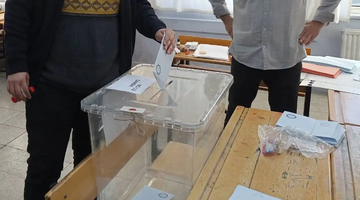Central banks on a gold buying spree: A flight to safety or strategic move?
Since the 2010 financial crisis, central banks around the world have been quietly accumulating vast amounts of gold, departing from their previous role as net sellers.

 Google News'te Doğruhaber'e abone olun.
Google News'te Doğruhaber'e abone olun. This shift in strategy, coinciding with unconventional monetary policies like quantitative easing and negative interest rates, has many wondering: what's behind the central bank gold rush?
The trend is undeniable. The World Gold Council (WGC) reports that central banks collectively added a whopping 483 tons of gold in 2015, the second-highest annual total since the gold standard's end. Leading the charge are Russia and China, both significantly increasing their gold holdings.
This buying frenzy isn't universal. Some, like Canada, have sold off most of their gold reserves. But for the majority, the focus is on accumulating, holding, or repatriating gold. As of today, central banks hold a staggering 32,754 tons, representing a substantial 17.8% of all the gold ever mined.
The timing of this gold buying spree is intriguing. It coincides perfectly with the implementation of unconventional monetary policies post-crisis. These policies, including massive bond-buying programs, near-zero interest rates, and even negative rates in some cases, have yielded mixed results. With the jury still out on their long-term effectiveness, central banks may be using gold as a hedge against potential failure.
Gold, a traditional safe-haven asset, is seen as a store of value that retains its worth during economic turmoil. By accumulating gold, central banks might be attempting to safeguard their financial systems in case these unconventional policies backfire.
Another potential motive is the desire to diversify away from the US dollar. Countries like Russia, whose relationship with the West has soured, have been especially active gold buyers. This could be a strategic move to reduce dependence on the US dollar as the world's reserve currency.
Top Gold Holders: Who's Buying What?
The list of top gold holders reveals interesting trends:
The United States: Sitting on a massive pile of 8,133 tons, the US holds nearly as much gold as the next three countries combined. Despite President Trump's recent claims to the contrary, the majority of this gold is believed to be stored at Fort Knox and other secure US locations.
Germany and Italy: Both European giants are actively repatriating their gold reserves from foreign vaults, underlining a potential lack of trust in the current economic system.
China: The world's third-largest economy has been steadily increasing its gold holdings, possibly aiming to bolster its international financial standing and influence the gold price.
Russia: Russia's aggressive gold buying is seen as a way to diversify its reserves and reduce reliance on the US dollar, particularly in light of strained relations with the West.
India: A major gold consumer culturally, India also boasts significant gold reserves, reflecting its deep-seated trust in the precious metal.
This global trend toward gold by central banks suggests potential economic uncertainties. Investors looking to hedge against similar concerns may want to consider including gold in their portfolios.
However, the situation remains complex, and careful analysis is crucial before making any investment decisions. (ILKHA)


















































